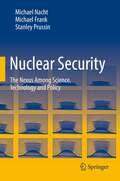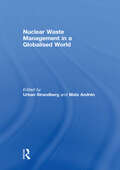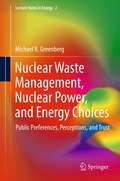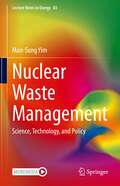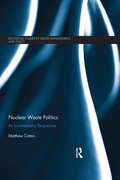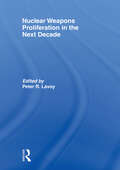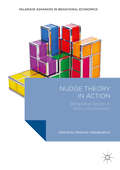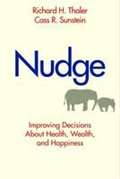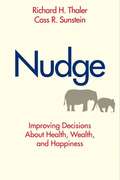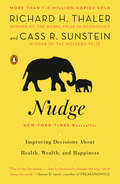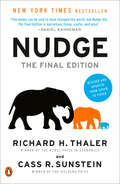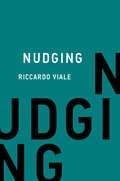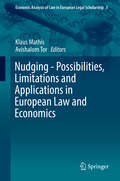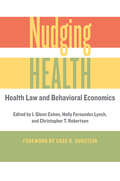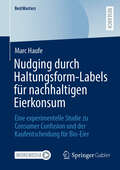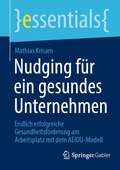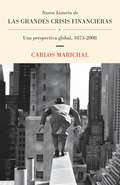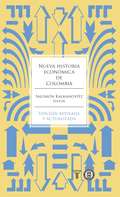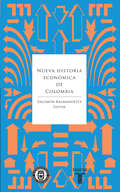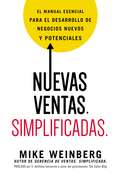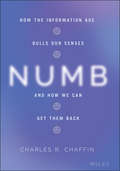- Table View
- List View
Nuclear Security: The Nexus Among Science, Technology and Policy
by Michael Frank Michael Nacht Stanley PrussinThis textbook is the first comprehensive and systematic account of the science, technology and policy issues associated with nuclear energy and nuclear weapons. Throughout their account of the evolution of nuclear policy, from its origin to the early Trump presidency, the authors interweave clear technical expositions of the science and technology that underpin and constrain it. The book begins by tracing the early work in atomic physics, the discovery of fission, and the developments that led to the Manhattan Project and the delivery of atomic bombs against Japan that ended World War II. It follows the initial failed attempts at nuclear disarmament, the onset of the Cold War nuclear arms competition, and the development of light water reactors to harness nuclear energy for electric power generation. The authors thoroughly unpack the problem of nuclear proliferation, examining the strategy and incentives for states that have and have not pursued nuclear weapons, and providing an overview of the nuclear arsenals of the current nuclear weapon states. They trace the technical, political and strategic evolution of deterrence, arms control and disarmament policies from the first attempts for an Outer Space Treaty in 1957 through the new START treaty of 2009. At critical junctures in the narrative, the authors explain the relevant nuclear science and technology including nuclear fission and criticality; nuclear materials and enrichment; nuclear detonation and nuclear weapons effects; nuclear weapons stockpile constraints, stewardship and surveillance; nuclear fusion and thermonuclear weapons; technologies for monitoring, verification and proliferation; and nuclear forensics. They conclude with an assessment of contemporary issues ranging from the Joint Comprehensive Plan of Action reached to halt Iran’s nuclear weapons development program, to the threat of nuclear terrorism, the perceived nuclear weapons policies of Russia and China, and the US efforts to provide disincentives for its allies to acquire their own nuclear weapons by maintaining credible security guarantees.
Nuclear Tube Assembly Room (A) (Condensed)
by John J. GabarroSupervisory practices and social structure in an electronics company assembly room. To be used with the (B) case. Based on American Radiatronics Corp. (A) by M.J. Steckler and P.R. Lawrence.
Nuclear Waste Management in a Globalised World
by Mats Andrén Urban StrandbergHigh-level nuclear waste (HLW) is a controversial and risky issue. For the next 100 years, the HLW will be subject to policy decisions and value assessments. Physically safe, technologically stable, and socio-economically sustainable HLW-management will top the agenda. That must be accomplished in a society whose segments are both stable and in a rapid state of flux, under the influence of global as well as national factors, private interests as well as the vagaries of national politics. Among the challenges to be faced is how to codify responsibilities of nuclear industry, governments and international organisations, and any adopted management policy must attain legitimacy at the local, national, regional and global levels. All such considerations raise questions about the practical and theoretical knowledge. This special issue book will address these questions by exploring HLW-management in Canada, France, Germany, India, Sweden, the UK and the USA. Special emphasis will be placed on highlighting national context, current trends and uncertainties, with relevance to a socially sustainable contemporary and future HLW-management.
Nuclear Waste Management, Nuclear Power, and Energy Choices
by Michael GreenbergHundreds of studies have investigated public perceptions and preferences about nuclear power, waste management, and technology. However there is clear lack of uniformity in the style, aims and methods applied. Consequently, the body of results is inconsistent and it is difficult to isolate relevant patterns or interpretations. Nuclear Waste Management, Nuclear Power and Energy Choices: Public Preferences, Perceptions and Trust presents a theoretical base for public reactions then classifies and reviews the large body of surveys carried out over the past decade. Particular focus is placed on residents within 50 miles US nuclear waste facilities due to the disproportionate presence of nuclear factors in their lives such as the legacy of nuclear waste disposal and job dependency. The motivations and reasons for their views such as fear, attraction to the economic benefits, trust of site managers and federal agencies, cultural views, personal history, and demographic attributes of the people are also considered to provide a balanced and detailed overview. Nuclear Waste Management, Nuclear Power and Energy Choices: Public Preferences, Perceptions and Trust includes a comprehensive treatment of the theories and literature, and most important is grounded in surveys in 2005, 2008, 2009, 2010, and 2011 which includes questions considering the impact of Fukushima on US public opinion. By including real life data alongside the analysis, Nuclear Waste Management, Nuclear Power, and Energy Choices: Public Preferences, Perceptions and Trust provides a relevant and concise reference for nuclear industry professionals. It also acts a resource for students and researchers studying nuclear-related topics including political, social and environmental factors. Particular focus is placed on residents within 50 miles US nuclear waste facilities due to the disproportionate presence of nuclear factors in their lives such as the legacy of nuclear waste disposal and job dependency. The motivations and reasons for their views such as fear, attraction to the economic benefits, trust of site managers and federal agencies, cultural views, personal history, and demographic attributes of the people are also considered to provide a balanced and detailed overview. Nuclear Waste Management, Nuclear Power and Energy Choices: Public Preferences, Perceptions and Trust includes a comprehensive treatment of the theories and literature, and most important is grounded in surveys in 2005, 2008, 2009, 2010, and 2011 which includes questions considering the impact of Fukushima on US public opinion. By including real life data alongside the analysis, Nuclear Waste Management, Nuclear Power, and Energy Choices: Public Preferences, Perceptions and Trust provides a relevant and concise reference for nuclear industry professionals. It also acts a resource for students and researchers studying nuclear-related topics including political, social and environmental factors. Particular focus is placed on residents within 50 miles US nuclear waste facilities due to the disproportionate presence of nuclear factors in their lives such as the legacy of nuclear waste disposal and job dependency. The motivations and reasons for their views such as fear, attraction to the economic benefits, trust of site managers and federal agencies, cultural views, personal history, and demographic attributes of the people are also considered to provide a balanced and detailed overview. Nuclear Waste Management, Nuclear Power and Energy Choices: Public Preferences, Perceptions and Trust includes a comprehensive treatment of the theories and literature, and most important is grounded in surveys in 2005, 2008, 2009, 2010, and 2011 which includes questions considering the impact of Fukushima on US public opinion. By including real life data alongside the analysis, Nuclear Waste Management, Nuclear Power, and Energy Choices: Public Preferences, Perceptions and Trust provides a relevant and concise reference for nuclear industry professionals. It also acts a resource for students and resear...
Nuclear Waste Management: Science, Technology, and Policy (Lecture Notes in Energy #83)
by Man-Sung YimThis book lays a comprehensive foundation for addressing the issue of safety in the lifecycle of nuclear waste. With the focus on the fundamental principles, the book covers key technical approaches to safety in the management of spent nuclear fuel, reprocessed high-level waste, low-level waste, and decommissioning wastes. Behaviors of nuclear waste in natural and engineered systems in relation to safety assessment are also described through the explanation of fundamental processes. For any country involved with the use of nuclear power, nuclear waste management is a topic of grave importance. Although many countries have heavily invested in nuclear waste management, having a successful national program still remains a major challenge. This book offers substantial guidance for those seeking solutions to these problems. As the problem of nuclear waste management is heavily influenced by social factors, the connection between technical and social issues in nuclear waste management is also discussed. The book is a core text for advanced students in nuclear and environmental engineering, and a valuable reference for those working in nuclear engineering and related areas.
Nuclear Waste Politics: An Incrementalist Perspective (Routledge Studies in Waste Management and Policy)
by Matthew CottonThe question of what to do with radioactive waste has dogged political administrations of nuclear-powered electricity-producing nations since the inception of the technology in the 1950s. As the issue rises to the forefront of current energy and environmental policy debates, a critical policy analysis of radioactive waste management in the UK provides important insights for the future. Nuclear Waste Politics sets out a detailed historical and social scientific analysis of radioactive waste management and disposal in the UK from the 1950s up to the present day; drawing international comparisons with Sweden, Finland, Canada and the US. A theoretical framework is presented for analysing nuclear politics: blending literatures on technology policy, environmental ethics and the geography and politics of scale. The book proffers a new theory of "ethical incrementalism" and practical policy suggestions to facilitate a fair and efficient siting process for radioactive waste management facilities. The book argues that a move away from centralised, high capital investment national siting towards a regional approach using deep borehole disposal, could resolve many of the problems that the high stakes, inflexible "megaproject" approach has caused across the world. This book is an important resource for academics and researchers in the areas of environmental management, energy policy, and science and technology studies.
Nuclear Weapons Proliferation in the Next Decade
by Peter R. LavoyThe intensification of the Iranian and North Korean nuclear crises has created new fears that deteriorating security conditions in the Middle East, Northeast Asia, and other regions will lead additional countries to seek their own nuclear arsenals in the years to come. This special issue examines the factors that are likely to shape nuclear weapons proliferation over the next decade. The internationally recognized authors of this issue, many of whom are prominent scholars and others of whom have held influential governmental positions with responsibility for countering nuclear proliferation, bring to light the conditions and events that might drive new countries to pursue nuclear weapons; the indicators and cautionary signs that can provide early warning that a country is interested in building nuclear bombs; and the policy and military measures that can be adopted to prevent or at least dissuade new proliferators. The introductory chapter develops a novel analytical approach focusing on the role of nuclear myths and mythmakers and the subsequent chapters draw on this approach to help analysts better understand and policy makers better manage nuclear proliferation over the next ten years.
Nucleon, Inc.
by Gary P. PisanoNucleon is a small biotechnology company whose first potential product is about to enter clinical testing. Before Nucleon can begin clinical trials, however, its management must decide how and where to manufacture the product. Three options are being contemplated: 1) build an in-house pilot plant, 2) contract production to a third-party, 3) license the development, manufacturing, and marketing rights to a corporate partner. Allows discussion of a number of manufacturing strategy issues relevant to R&D-intensive entrepreneurial firms. A key issue is the strategic value of in-house manufacturing to a company that competes largely on very distinctive and specialized R&D capabilities.
Nucor at a Crossroads
by Pankaj Ghemawat Henricus J. StanderNucor is a minimill deciding whether to spend a significant fraction of its net worth on a commercially unproven technology in order to penetrate a large but hitherto inaccessible segment of the steel market. This case is an integrative one designed to facilitate full-blown analysis of a strategic investment decision.
Nudge Theory in Action
by Sherzod AbdukadirovThis collection challenges the popular but abstract concept of nudging, demonstrating the real-world application of behavioral economics in policy-making and technology. Groundbreaking and practical, it considers the existing political incentives and regulatory institutions that shape the environment in which behavioral policy-making occurs, as well as alternatives to government nudges already provided by the market. The contributions discuss the use of regulations and technology to help consumers overcome their behavioral biases and make better choices, considering the ethical questions of government and market nudges and the uncertainty inherent in designing effective nudges. Four case studies - on weight loss, energy efficiency, consumer finance, and health care - put the discussion of the efficiency of nudges into concrete, recognizable terms. A must-read for researchers studying the public policy applications of behavioral economics, this book will also appeal to practicing lawmakers and regulators.
Nudge, Test, and Escalate Gradually: Problem-Solving Strategies for Quiet Leaders
by Joseph L. Badaracco Jr.In fluid situations with many contingencies, successful leadership depends on learning and taking the right small steps. This chapter examines how quiet leaders gradually get a sense of the flow of events, hazards to be avoided, and opportunities they can exploit by testing, probing, and experimenting.
Nudge: Improving Decisions About Health, Wealth, And Happiness
by Cass R. Sunstein Richard H. ThalerEvery day, we make decisions on topics ranging from personal investments to schools for our children to the meals we eat to the causes we champion. Unfortunately, we often choose poorly. The reason, the authors explain, is that, being human, we all are susceptible to various biases that can lead us to blunder. Our mistakes make us poorer and less healthy; we often make bad decisions involving education, personal finance, health care, mortgages and credit cards, the family, and even the planet itself. Thaler and Sunstein invite us to enter an alternative world, one that takes our humanness as a given. They show that by knowing how people think, we can design choice environments that make it easier for people to choose what is best for themselves, their families, and their society. Using colorful examples from the most important aspects of life, Thaler and Sunstein demonstrate how thoughtful "choice architecture" can be established to nudge us in beneficial directions without restricting freedom of choice.
Nudge: Improving Decisions About Health, Wealth, and Happiness
by Cass R. Sunstein Richard H. ThalerEvery day, we make decisions on topics ranging from personal investments to schools for our children to the meals we eat to the causes we champion. Unfortunately, we often choose poorly. The reason, the authors explain, is that, being human, we all are susceptible to various biases that can lead us to blunder. Our mistakes make us poorer and less healthy; we often make bad decisions involving education, personal finance, health care, mortgages and credit cards, the family, and even the planet itself. Thaler and Sunstein invite the listener to enter an alternative world, one that takes our humanness as a given. They show that by knowing how people think, we can design choice environments that make it easier for people to choose what is best for themselves, their families, and their society. Using colorful examples from the most important aspects of life, Thaler and Sunstein demonstrate how thoughtful "choice architecture" can be established to nudge us in beneficial directions without restricting freedom of choice. Nudgeoffers a unique new take-from neither the left nor the right-on many hot-button issues, for individuals and governments alike. This is one of the most engaging and provocative audio books to come along in many years.
Nudge: Improving Decisions About Health, Wealth, and Happiness (The Storrs Lectures Ser.)
by Cass R. Sunstein Richard H. ThalerFor fans of Malcolm Gladwell’s Blink and Nobel Prize winner Daniel Kahneman’s Thinking Fast and Slow, a revelatory new look at how we make decisions More than 750,000 copies sold A New York Times bestsellerAn Economist Best Book of the YearA Financial Times Best Book of the YearNudge is about choices—how we make them and how we can make better ones. Drawing on decades of research in the fields of behavioral science and economics, authors Richard H. Thaler and Cass R. Sunstein offer a new perspective on preventing the countless mistakes we make—ill-advised personal investments, consumption of unhealthy foods, neglect of our natural resources—and show us how sensible “choice architecture” can successfully nudge people toward the best decisions. In the tradition of The Tipping Point and Freakonomics, Nudge is straightforward, informative, and entertaining—a must-read for anyone interested in our individual and collective well-being.
Nudge: The Final Edition (Routledge Advances In Behavioural Economics And Finance Ser.)
by Cass R. Sunstein Richard H. ThalerAn essential new edition―revised and updated from cover to cover―of one of the most important books of the last two decades, by Nobel Prize winner Richard H. Thaler and Cass R. Sunstein* More than 2 million copies sold* New York Times bestsellerSince the original publication of Nudge more than a decade ago, the title has entered the vocabulary of businesspeople, policy makers, engaged citizens, and consumers everywhere. The book has given rise to more than 400 &“nudge units&” in governments around the world and countless groups of behavioral scientists in every part of the economy. It has taught us how to use thoughtful &“choice architecture&”—a concept the authors invented—to help us make better decisions for ourselves, our families, and our society.Now, the authors have rewritten the book from cover to cover, making use of their experiences in and out of government over the past dozen years as well as an explosion of new research in numerous academic disciplines. To commit themselves to never undertaking this daunting task again, they are calling this the &“final edition.&” It offers a wealth of new insights, for both its avowed fans and newcomers to the field, about a wide variety of issues that we face in our daily lives—COVID-19, health, personal finance, retirement savings, credit card debt, home mortgages, medical care, organ donation, climate change, and &“sludge&” (paperwork and other nuisances we don&’t want, and that keep us from getting what we do want)—all while honoring one of the cardinal rules of nudging: make it fun!
Nudging
by Riccardo VialeHow &“nudges&” by government can empower citizens without manipulating their preferences or exploiting their biases.We&’re all familiar with the idea of &“nudging&”—using behavioral mechanisms to encourage people to make certain choices—popularized by Richard Thaler and Cass Sunstein in their bestselling 2008 book Nudge. This approach, also known as &“libertarian paternalism,&” goes beyond typical programs that simply provide information and incentives; nudges can range from automatic enrollment in a pension plan to flu-shot scheduling. In Nudging, Riccardo Viale explores the evolution of nudging and proposes new approaches that would empower citizens without manipulating them paternalistically. He shows that we can use the tools of the behavioral sciences without abandoning the principle of conscious decision-making. Viale discusses the work of Herbert Simon, Gerd Gigerenzer, Daniel Kahneman, and Amos Tversky that laid the foundation of behavioral economics, describes how policy makers have sought to help people avoid bad decisions, offers examples of effective nudging, and considers how to nudge the nudgers. How can we tell good nudges from bad nudges? Viale explains that good nudges help us avoid bias and encourage deliberate decision making; bad nudges, on the other hand, use bias to nudge people unconsciously into unintentional behaviors. Bad nudges attempt to compel decisions based on economic rationality. Good nudges encourage decisions based on a pragmatic, adaptive, ecological kind of rationality. Policy makers should take note.
Nudging - Possibilities, Limitations and Applications in European Law and Economics
by Klaus Mathis Avishalom TorThis anthology provides an in-depth analysis and discusses the issues surrounding nudging and its use in legislation, regulation, and policy making more generally. The 17 essays in this anthology provide startling insights into the multifaceted debate surrounding the use of nudges in European Law and Economics. Nudging is a tool aimed at altering people's behaviour in a predictable way without forbidding any option or significantly changing economic incentives. It can be used to help people make better decisions to influence human behaviour without forcing them because they can opt out. Its use has sparked lively debates in academia as well as in the public sphere. This book explores who decides which behaviour is desired. It looks at whether or not the state has sufficient information for debiasing, and if there are clear-cut boundaries between paternalism, manipulation and indoctrination. The first part of this anthology discusses the foundations of nudging theory and the problems associated, as well as outlining possible solutions to the problems raised. The second part is devoted to the wide scope of applications of nudges from contract law, tax law and health claim regulations, among others. This volume is a result of the flourishing annual Law and Economics Conference held at the law faculty of the University of Lucerne. The conferences have been instrumental in establishing a strong and ever-growing Law and Economics movement in Europe, providing unique insights in the challenges faced by Law and Economics when applied in European legal traditions.
Nudging Health: Health Law and Behavioral Economics
by I. Glenn Cohen, Holly Fernandez Lynch, and Christopher T. RobertsonA deep look at the role of behavioral "nudges" for improving health.Winner of the CHOICE Outstanding Academic Title of the Choice ACRLBehavioral nudges are everywhere: calorie counts on menus, automated text reminders to encourage medication adherence, a reminder bell when a driver’s seatbelt isn’t fastened. Designed to help people make better health choices, these reminders have become so commonplace that they often go unnoticed. In Nudging Health, forty-five experts in behavioral science and health policy from across academia, government, and private industry come together to explore whether and how these tools are effective in improving health outcomes.Behavioral science has swept the fields of economics and law through the study of nudges, cognitive biases, and decisional heuristics—but it has only recently begun to impact the conversation on health care. Nudging Health wrestles with some of the thorny philosophical issues, legal limits, and conceptual questions raised by behavioral science as applied to health law and policy. The volume frames the fundamental issues surrounding health nudges by addressing ethical questions. Does cost-sharing for health expenditures cause patients to make poor decisions? Is it right to make it difficult for people to opt out of having their organs harvested for donation when they die? Are behavioral nudges paternalistic? The contributors examine specific applications of behavioral science, including efforts to address health care costs, improve vaccination rates, and encourage better decision-making by physicians. They wrestle with questions regarding the doctor-patient relationship and defaults in healthcare while engaging with larger, timely questions of healthcare reform.Nudging Health is the first multi-voiced assessment of behavioral economics and health law to span such a wide array of issues—from the Affordable Care Act to prescription drugs.Contributors: David A. Asch, Jerry Avorn, Jennifer Blumenthal-Barby, Alexander M. Capron, Niteesh K. Choudhry, I. Glenn Cohen, Sarah Conly, Gregory Curfman, Khaled El Emam, Barbara J. Evans, Nir Eyal, Andrea Freeman, Alan M. Garber, Jonathan Gingerich, Michael Hallsworth, Jim Hawkins, David Huffman, David A. Hyman, Julika Kaplan, Aaron S. Kesselheim, Nina A. Kohn, Russell Korobkin, Jeffrey T. Kullgren, Matthew J.B. Lawrence, George Loewenstein, Holly Fernandez Lynch, Ester Moher, Abigail R. Moncrieff, David Orentlicher, Manisha Padi, Christopher T. Robertson, Ameet Sarpatwari, Aditi P. Sen, Neel Shah, Zainab Shipchandler, Anna D. Sinaiko, Donna Spruijt-Metz, Cass R. Sunstein, Thomas S. Ulen, Kristen Underhill, Kevin G. Volpp, Mark D. White, David V. Yokum, Jennifer L. Zamzow, Richard J. Zeckhauser
Nudging durch Haltungsform-Labels für nachhaltigen Eierkonsum: Eine experimentelle Studie zu Consumer Confusion und der Kaufentscheidung für Bio-Eier (BestMasters)
by Marc HaufeMehrstufige Labels, wie sie auf Fleisch- und Milchprodukten zu finden sind, sollen die Transparenz und Sichtbarkeit nachhaltiger Lebensmittel verbessern, auf Eierpackungen fehlt jedoch aktuell ein solches Label. In dieser Studie wird untersucht, welchen Einfluss die Einführung eines Haltungsform-Labels für Legehennen auf die Label Confusion und die Zahlungs- und Kaufbereitschaft für Bio-Eier hat. Dazu wurde ein Online-Experiment mit 257 Teilnehmern durchgeführt. Verglichen wurde die aktuelle Tierhaltungskennzeichnung bei Eiern mittels Schriftzug, mit einem Haltungsform-Label analog dem für Fleischprodukte sowie einem optimierten Label, das die Anzahl der Tiere pro Fläche visualisiert. In Anbetracht der Ergebnisse sollte über die Einführung einer optimierten Version des mehrstufigen Haltungsform-Labels auf Eierverpackungen nachgedacht werden. Die Studie liefert neue Erkenntnisse für die Labelforschung bei Lebensmitteln, insbesondere bzgl. der Kaufbereitschaft für Bio-Eier.
Nudging für ein gesundes Unternehmen: Endlich erfolgreiche Gesundheitsförderung am Arbeitsplatz mit dem AEIOU-Modell (essentials)
by Mathias KrisamSie sind aktiv in der betrieblichen Gesundheitsförderung und stehen vor der Herausforderung, dass Ihre Maßnahmen Ihre Zielgruppe nicht im gewünschten Maße erreichen? Dann ist dieses Buch genau das richtige für Sie!Es bietet Ihnen einen schnellen Einstieg in das Thema Nudging zur Gesundheitsförderung am Arbeitsplatz. Sie erfahren die verhaltenswissenschaftlichen Hintergründe und Theorien des Nudgings und lernen anschaulich, wie Sie dieses erfolgreich zur Gesundheitsförderung einsetzen können. Sie werden in das Nudging-Modell AEIOU eingeführt, und Sie erhalten zahlreiche Nudging-Beispiele zu Bewegung, Ernährung, Entspannung, Tabakreduktion und digitaler Gesundheitsförderung. Starten Sie schon morgen mit der Entwicklung eines Nudging-Konzepts für Ihr Unternehmen!
Nueva historia de las grandes crisis financieras: Una perspectiva global, 1873-2008
by Carlos MarichalCon el objeto de entender mejor la debacle contemporánea, este libroofrece un resumen de la historia de las mayores crisis financieras delpasado y de nuestra época. Entre mediados de septiembre y fines de octubre de 2008, las bolsas ylos sistemas bancarios e hipotecarios de los Estados Unidos sufrieron elefecto de un verdadero tsunami financiero. Siguió una cadena de pánicobursátil que se extendió a escala mundial y que ha sido considerada comola peor crisis financiera en ochenta años. No hay día que pase sin quese formulen nuevas preguntas en todo el mundo. ¿Son suficientes yadecuadas las medidas de rescate adoptadas por gobiernos y bancoscentrales en todo el planeta? ¿Cuáles fueron las causas de ese enormedescalabro? ¿Por qué no anticiparon los bancos centrales los peligros ypor qué no intentaron desinflar las inmensas burbujas financieras?Marichal familiariza al lector con los antecedentes históricos y con losprincipales detonantes de la tormenta que estalló en 2008 y concluye conuna síntesis de los debates acerca de las medidas puestas en marcha parasuperar los efectos de la crisis actual. Con gran rigor en lainvestigación y talento expositivo, nos acerca así las respuestas a unacuestión trascendente para nuestro bienestar presente y futuro.
Nueva historia económica de Colombia
by Salomón KalmanovitzUna edición revisión y actualizada de este importante libro sobre la economía en Colombia. La historia económica es el laboratorio de la economía. Esta es una creencia que compartimos los que participamos en esta gran empresa de elaborar una nueva historia económica de Colombia que pone a prueba diversas teorías para explicar la realidad. El Banco de la República tuvo la iniciativa de elaborar una historia que fuera a la vez de la población y sus condiciones de vida, de la construcción de Estado y de sus cuentas fiscales, del comercio internacional, las políticas públicas, de la macroeconomía, de la industria y el problema agrario. Hoy ofrecemos una versión ampliada y corregida, aportando las series estadísticas actualizadas e incluyendo una buena parte de la literatura en historia que se ha producido en los últimos años. Queremos reafirmar los temas sociales y políticos y continuar con la búsqueda de la objetividad, aportando el análisis de los datos duros. Hemos impreso un carácter divulgativo a la exposición, combinando los métodos de la historia cuantitativa, el análisis de las instituciones que moldean los incentivos de los ciudadanos, la economía política detrás de las grandes decisiones y la historia comparada, para abordar diversos períodos de manera cronológica, pero también temática. Así, buscamos trazar algunas perspectivas que se abren para Colombia durante el siglo XXI. Salomón Kalmanovitz Durante los últimos 30 años las investigaciones de Salomón Kalmanovitz han influido de manera decisiva en cómo pensamos sobre los factores que han incidido en el desarrollo económico de Colombia. Este libro establecerá la agenda investigativa de los próximos 30 años. James Robinson Profesor de la Universidad de Harvard Kalmanovitz y sus colaboradores ofrecen explicaciones originales y convincentes sobre las fuerzas que impulsaron o retrasaron las grandes transformaciones políticas, económicas y sociales de Colombia, desde la Colonia hasta nuestros días. Se trata de un libro que, por muchos años, será fuente ineludible de inquietudes y respuestas para todo lector interesado honestamente en la historia colombiana. José Darío Uribe
Nueva historia económica de Colombia
by Salomón KalmanovitzLa historia de la economía en Colombia. La historia es el laboratorio de la economía o de la administracióncuando analiza casos empresariales en los que se tomaron decisionesimportantes. Frente a las nuevas orientaciones que pretenden conducir ala historia por inciertos caminos posmodernos, lo mejor que podemoshacer los economistas y administradores interesados es ofrecer nuestrasalternativas, reafirmar la importancia de los temas sociales, hacer usode modelos adecuados y de datos verídicos, continuar con la búsqueda dela objetividad y del rigor; en fin, elaborar trabajos que demuestren suutilidad para entender mejor el presente. Y vencer también una tendenciainconveniente que comparten muchos economistas, la cual consiste en unafalta de interés por hacerse entender de un público más amplio ysumergirse en un lenguaje complejo de comunidad cerrada.
Nuevas ventas. Simplificadas.: El manual esencial para el desarrollo de posibles y nuevos negocios
by Mike WeinbergPorque en las ventas no existe nada que dure para siempre, necesitas nuevos clientes y nuevos negocios… todo el tiempo. Por mucho que realices negocios con clientes leales, la vida de tu negocio consiste en abrir cuentas nuevas constantemente. Tanto si eres representante de ventas, gerente de ventas o ejecutivo de servicios profesionales, se espera de ti que atraigas nuevos negocios, para lo que necesitarás una fórmula comprobada para la prospección, el desarrollo y cierre de tratos. Aquí encontrarás la respuesta. Aprenderás cómo: • Identificar una lista estratégica, limitada y realizable de prospectos reales • Bosquejar un «argumento de ventas» persuasivo y centrado en tu cliente • Perfeccionar las llamadas telefónicas proactivas para alcanzar reuniones cara a cara con más clientes potenciales • Tomar ventaja del correo electrónico, los mensajes de voz y las redes sociales • Superar, e incluso evitar, los reflejos de todo posible comprador contra los vendedores • Formar relaciones, porque la gente hace negocios con aquellos que les agradan y en quienes confían • Prepararte para una llamada de ventas exitosa y bien estructurada • Dejar de hacerle presentaciones a los clientes y comenzar a dialogar con ellos • Hacer tiempo en tu calendario para actividades de desarrollo de negocios • Y mucho más Lleno de ejemplos y anécdotas, este libro logra un equilibrio entre una perspectiva franca, y muchas veces divertida, de los errores que cometen la mayor parte de los vendedores y los ejecutivos con un plan fácil de seguir para incrementar notablemente tu cantidad de nuevos clientes a partir de hoy.
Numb: How the Information Age Dulls Our Senses and How We Can Get them Back
by Charles R. ChaffinDiscover how to manage this noisy world without it managing you. In Numb, distinguished author Dr. Charles R. Chaffin delivers a fun and evidence-based exploration of how you can devote more attention on what you believe is important while ignoring the distractions that increasingly permeate your life. Using research from cognitive, education, positive, and clinical psychology, the book identifies the sources of noise and distraction in this information age and how we can manage it in all aspects of our lives. You'll learn about: How experiences in technology, from social media to selfies to porn, impact our ability to engage and connect with others The news we consume and the impact of confirmation bias, filter bubbles, and tribalism How FOMO and choice overload impact our decision-making The power of our attention in all aspects of our daily lives Perfect for anyone interested in the expanding impact of the information age on our collective psyche, ;Numb helps empower you to use technology and information not as a destination, but as a tool towards authenticity and empowerment.
